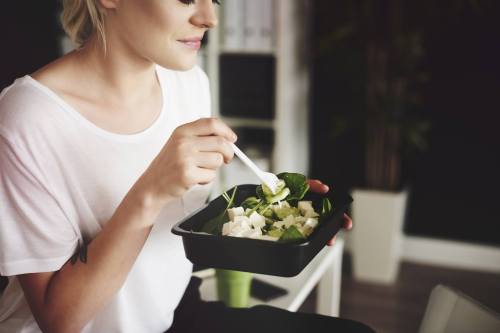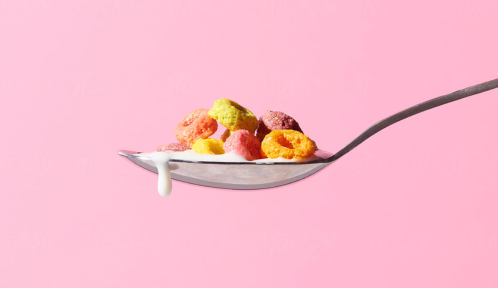Once upon a time, my mom packed my lunchbox. PB&Js, apples, and Ritz Bits were my everyday fare. (Ah, the golden days of youth!) Now that I’m paying for my own groceries, it’s my responsibility to mix and match the items in my refrigerator into some sort of “meal.” Often I find myself unsure if I’m actually prepping a healthy lunch that will satiate and nourish me—and apparently a whole lot of Americans are just as confused as I am.
The American Heart Association (AHA) recently surveyed 1,062 employed U.S. adults ages 18 and older, finding that many people are scratching their heads about the wholesomeness of their midday meals. While 86 percent of people reported making their own lunches at least some of the time, 91 percent reported that they were interested in “improving the healthfulness of their typical workday lunch.” Plus, 56 percent of those who schlepped salads, sandwiches, and leftovers to their office each day said they struggled to choose nutritious options while on the clock.
Obviously, there’s confusion when it comes to 9-to-5 noshing. So to once and for all receive some clarity on how to thrive after the age of Lunchables, I asked Amy Gorin, MS, RDN, owner of Amy Gorin Nutrition, to offer up a (beyond easy!) five item checklist for determining how healthy your lunch *really* is. If you can answer check, check, check, check, and check, then congratulations—you’re doing your body good.
When packing a healthy lunch, ask yourself five questions
1. Is half my plate composed of non-starchy vegetables?
“Vegetables help to fill you up for very few calories,” explains Gorin. “Non-starchy ones—such as leafy greens, tomatoes, broccoli, and cucumbers—are especially great to load up on. These veggies are hydrating because they have a very high water content, and they supply cholesterol-helping fiber, as well as plenty of vitamins and minerals.” Steam ’em, air fry ’em, but whatever you do—eat those veggies.
2. Am I eating protein?
You’ve heard it before and you’ll hear it again: protein helps with everything from brain function to satiety. “Along with vegetables, I recommend including lean protein with every meal. Aim for at least 15 to 20 grams, if possible. So, for instance, a 3 to 4 ounce cooked chicken breast or a piece of salmon. This protein will help to fill you up and will provide you with fuel to power through your afternoon,” she says.
Here’s how to meet your protein needs if you live a plant-based lifestyle:
3. Have I served myself a moderate amount of healthy fats?
“Healthy fats also help to keep you fuller for longer. These fats include avocado, olive oil, nuts, and olives. Because healthy fats tend to be higher in calories, you should eat these in moderation,” says the dietitian. A couple of teaspoons of olive oil used to cook your chicken, a quarter of an avocado on a piece of toast, or about 10 olives in a salad will do the trick.
Finally, a dietitian explains why avocados are absolutely worth the hype:
4. Does my plate include whole grains?
“Whole grains provide fiber, which also help to keep you full and do great things for your health! If you’re eating a sandwich, have it on whole-grain bread. And try pair salmon with brown rice or quinoa,” says Gorin.
Whole grains are a cornerstone of the Mediterranean diet. Learn more about the eating plan:
5. Am I drinking enough water?
What you sip is just as important as what you chew! “Make sure you have a tall glass of water—ice cold is best for your metabolism—with your meal. If you want some flavor, make a glass of unsweetened iced tea,” says Gorin.
Now for some lunch ideas to bring Gorin’s five rules to fruition. Try a functional medicine doctor’s “fat salad,” or other meals you can make for less than $3.
Sign Up for Our Daily Newsletter
Get all the latest in wellness, trends, food, fitness, beauty, and more delivered right to your inbox.
Got it, you've been added to our email list.










